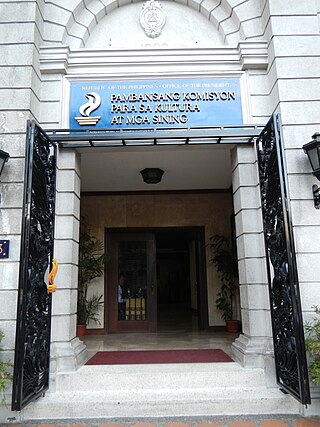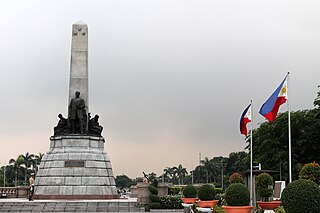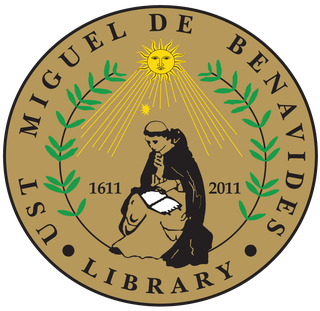Baybayin is a Philippine script. The script is an abugida belonging to the family of the Brahmic scripts. Geographically, it was widely used in Luzon and other parts of the Philippines prior to and during the 16th and 17th centuries before being replaced by the Latin alphabet during the period of Spanish colonization. It was used in the Tagalog language and, to a lesser extent, Kapampangan-speaking areas; its use spread to the Ilocanos in the early 17th century. In the 19th and 20th centuries, baybayin survived and evolved into multiple forms—the Tagbanwa script of Palawan, and the Hanuno'o and Buhid scripts of Mindoro—and was used to create the constructed modern Kulitan script of the Kapampangan and the Ibalnan script of the Palawan people. Under the Unicode Standard and ISO 15924, the script is encoded as the Tagalog block.
The culture of the Philippines is characterized by cultural and ethnic diversity. Although the multiple ethnic groups of the Philippine archipelago have only recently established a shared Filipino national identity, their cultures were all shaped by the geography and history of the region, and by centuries of interaction with neighboring cultures, and colonial powers. In more recent times, Filipino culture has also been influenced through its participation in the global community.

The National Commission for Culture and the Arts of the Philippines is the official government agency for culture in the Philippines. It is the overall policy making body, coordinating, and grants giving agency for the preservation, development and promotion of Philippine arts and culture; an executing agency for the policies it formulates; and task to administering the National Endowment Fund for Culture and the Arts (NEFCA) – fund exclusively for the implementation of culture and arts programs and projects.

The National Library of the Philippines is the official national library of the Philippines. The complex is located in Ermita on a portion of Rizal Park facing T. M. Kalaw Avenue, neighboring culturally significant buildings such as the Museum of Philippine Political History and the National Historical Commission. Like its neighbors, it is under the jurisdiction of the National Commission for Culture and the Arts (NCCA).

The Ayala Museum is a museum in Makati, Metro Manila, Philippines. It is run privately by the Ayala Foundation and houses archaeological, ethnographic, historical, fine arts, numismatics, and ecclesiastical exhibits. Since its establishment in 1967, the museum has been committed to showcasing overseas collections and situating contemporary Philippine art in the global arena in a two-way highway of mutual cooperation and exchange with local and international associates. The museum was reopened on December 4, 2021, after a two-year renovation.

The National Museum of Anthropology, formerly known as the Museum of the Filipino People, is a component museum of the National Museum of the Philippines which houses Ethnological and Archaeological exhibitions. It is located in the Agrifina Circle, Rizal Park, Manila adjacent to the National Museum of Fine Arts building.

The Rizal Memorial Coliseum is an indoor arena in the Rizal Memorial Sports Complex in Manila, Philippines. It can hold up to 6,100 people.

Ambeth R. Ocampo is a Filipino public historian, academic, cultural administrator, journalist, author, and independent curator. He is best known for his definitive writings about Philippines' national hero José Rizal and on topics on Philippine history and Philippine art through Looking Back, his bi-weekly editorial page column in the Philippine Daily Inquirer.
The Arts in the Philippines are all the arts in the Philippines, from the beginning of civilization to the present. They reflect a range of artistic influences on the country's culture, including indigenous art. Philippine art consists of two branches: traditional and non-traditional art. Each branch is divided into categories and subcategories.
The national symbols of the Philippines consist of symbols that represent Philippine traditions and ideals and convey the principles of sovereignty and national solidarity of the Filipino people. Some of these symbols namely the national flag, the Great Seal, the coat of arms and the national motto are stated in the Flag and Heraldic Code of the Philippines, which is also known as Republic Act 8491. In the Constitution of the Philippines, the Filipino language is stated as the national language of the Philippines. Aside from those stated symbols in the Constitution and in Republic Act 8491, there are only six official national symbols of the Philippines enacted through law, namely sampaguita as national flower, narra as national tree, the Philippine eagle as national bird, Philippine pearl as national gem, arnis as national martial art and sport and the Filipino Sign Language as the national sign language. Thus, there is a total of twelve official national symbols passed through Philippine laws.

The Philippine Registry of Cultural Property, abbreviated as PRECUP is a national registry of the Philippine Government used to consolidate in one record all cultural property that are deemed important to the cultural heritage, tangible and intangible, of the Philippines. On June 11, 2018, the entries in the newly updated PRECUP was at 3,921. Additionally, 1,259 out of 1,715 LGUs, or 73 percent of LGUs have established local cultural inventories (LCI).
Ani ng Dangal or "Harvest of Honors" is an organizational award given by the National Commission for Culture and the Arts, an agency under the Office of the President of the Republic of the Philippines. It is an annual event in the Philippines celebrated as a highlight and concluding rite of the Philippine Arts Festival.

The Miguel de Benavides Library, also known as the University of Santo Tomas Library, is the main academic library of the University of Santo Tomas. The library has been in continuous service and its collection antedates the existence of the university itself.

The Archives of the University of Santo Tomas (AUST), also known in Spanish as the Archivo de la Universidad de Santo Tomas, is located at the Miguel de Benavides Library in Manila. The AUST is the central repository of historical and rare documents pertaining to, but not exclusively, to the history of the University of Santo Tomas, one of the oldest existing universities in Asia, and the oldest institution of higher learning in the Philippines. The collections consist of historical documents such as Papal bulls, royal decrees, rare Filipiniana prints, historical treatises, addresses, sermons, novenas, catechisms in many Philippine languages, national periodicals, and academic records of all educational institutions in the Philippines during the Spanish period. The archives is also home to the only incunabula, or books printed before 1500, in the country.

Historical markers are installed by the National Historical Commission of the Philippines (NHCP) in the Philippines and places abroad that signify important events, persons, structures, and institutions in Philippine national and local histories. The plaques themselves are permanent signs installed by the NHCP in publicly visible locations on buildings, monuments, or in special locations. Local municipalities and cities can also install markers of figures and events of local significance. Though they may have the permission of the NHCP, these markers are barred from using the seal of the Republic of the Philippines.
Intangible cultural heritage (ICH) includes traditions and living expressions that are passed down from generation to generation within a particular community.

The archaeology of the Philippines is the study of past societies in the territory of the modern Republic of the Philippines, an island country in Southeast Asia, through material culture.
Suyat is the modern collective name of the indigenous scripts of various ethnolinguistic groups in the Philippines prior to Spanish colonization in the 16th century up to the independence era in the 21st century. The scripts are highly varied; nonetheless, the term was suggested and used by cultural organizations in the Philippines to denote a unified neutral terminology for Philippine indigenous scripts.

Heneral Tuna is a 2021 Philippine animated web miniseries directed by Avid Liongoren under Rocketsheep Studio.













